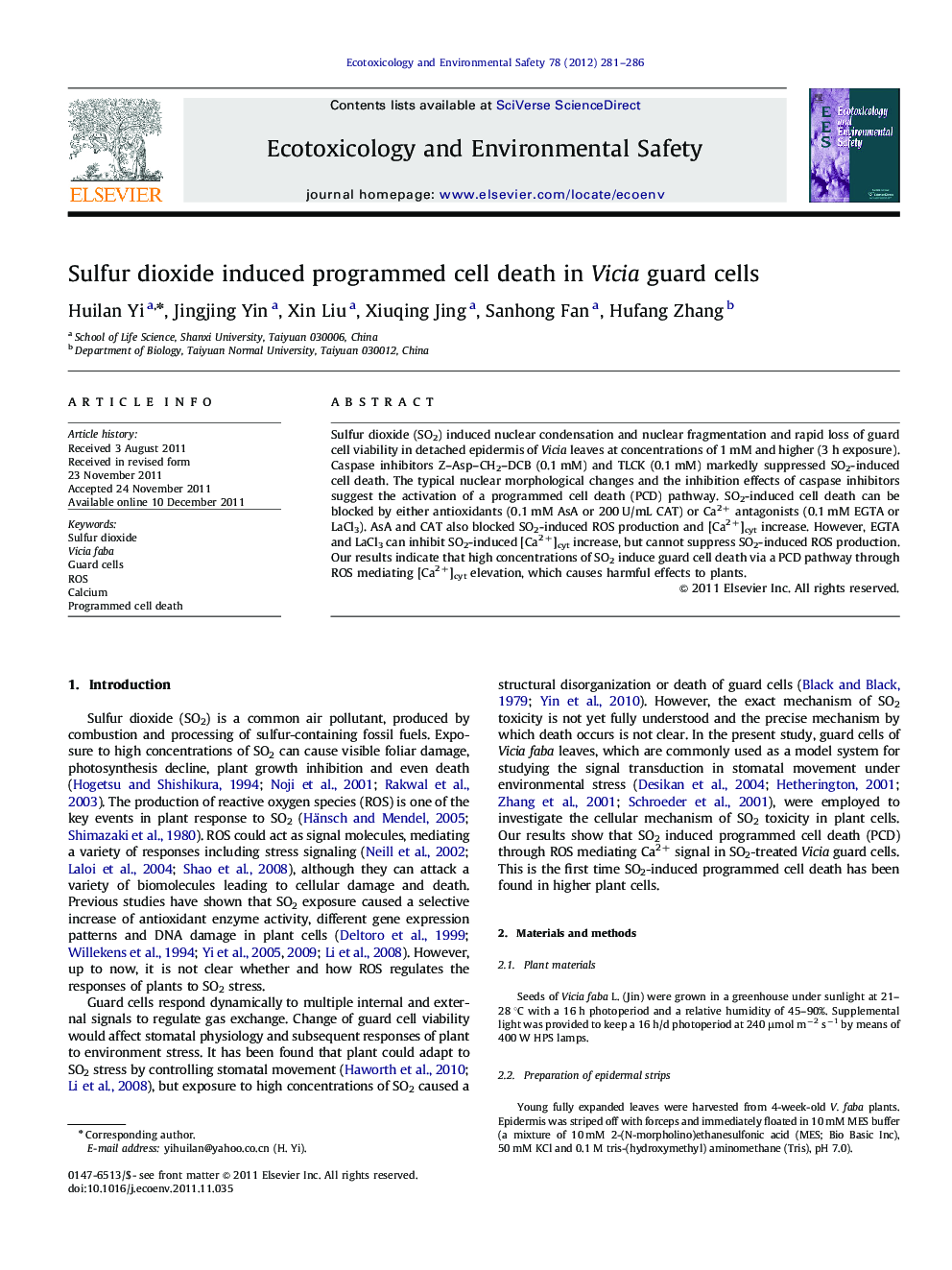| Article ID | Journal | Published Year | Pages | File Type |
|---|---|---|---|---|
| 4420920 | Ecotoxicology and Environmental Safety | 2012 | 6 Pages |
Sulfur dioxide (SO2) induced nuclear condensation and nuclear fragmentation and rapid loss of guard cell viability in detached epidermis of Vicia leaves at concentrations of 1 mM and higher (3 h exposure). Caspase inhibitors Z–Asp–CH2–DCB (0.1 mM) and TLCK (0.1 mM) markedly suppressed SO2-induced cell death. The typical nuclear morphological changes and the inhibition effects of caspase inhibitors suggest the activation of a programmed cell death (PCD) pathway. SO2-induced cell death can be blocked by either antioxidants (0.1 mM AsA or 200 U/mL CAT) or Ca2+ antagonists (0.1 mM EGTA or LaCl3). AsA and CAT also blocked SO2-induced ROS production and [Ca2+]cyt increase. However, EGTA and LaCl3 can inhibit SO2-induced [Ca2+]cyt increase, but cannot suppress SO2-induced ROS production. Our results indicate that high concentrations of SO2 induce guard cell death via a PCD pathway through ROS mediating [Ca2+]cyt elevation, which causes harmful effects to plants.
► Sulfur dioxide (SO2) induced programmed cell death (PCD) in Vicia guard cells. ► ROS production in SO2-stimulated guard cells triggered SO2-induced cell death. ► ROS activation of Ca2+ channels and [Ca2+]cyt increase mediated SO2-induced cell death. ► Caspase-like proteases involved in the implementation of SO2-induced cell death. ► High concentrations of SO2 are harmful to plants by triggering guard cell death.
